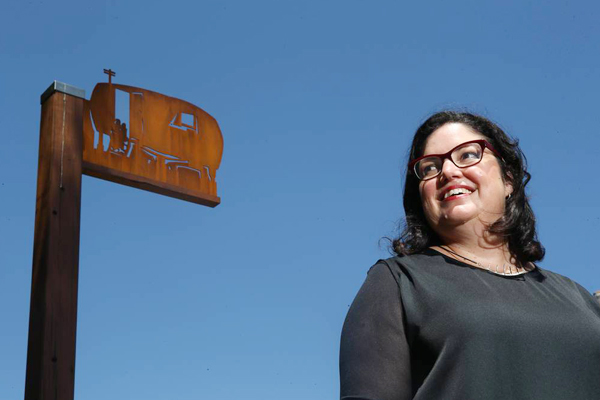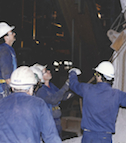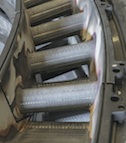WOLLONGONG SCULPTURES HONOUR ILLAWARRA MIGRANTS

A nine-year dream to create an Illawarra artwork honouring the important role of migrants has come to fruition.
Wollongong City Council and the project committee unveiled a steel sculpture at George Dodd Reserve, North Wollongong, on Friday, January 23, as part of The Migration Project. Senator Concetta Fierravanti-Wells, Parliamentary Secretary for Multicultural Affairs, also attended.
The proposal was sparked by Calabria Cultural Centre members Mary Zanotto, Dom Chieffe and Domenica Risorto in 2006.
The steering committee was formed by the trio in 2009 and included representatives from the Greek and Macedonian communities, the Multicultural Communities Council of the Illawarra, the Calabria Cultural Centre and the Illawarra Migration Heritage Project.
Mary Zanotto, who has been involved from its beginning, said the project's importance lay in the stories it told.
"We were determined to succeed because this sculpture represents the countries that migrants have come from and the journeys they have made - these were the stories I grew up hearing," Mrs Zanotto said.
Project artist Nerine Martini has had more than 20 years' artistic experience, with a number of public sculptures in the Blue Mountains, Blacktown and Canberra.
Martini, who joined the project a year ago, describes her art as symbolic sculpture, poetic rather than abstract.
"Being selected to design the artwork was a terrific honour and the collaboration has been a beautiful process," Martini said.
The main sculpture is a boat, representative of the journey taken by migrants in search of a better life.
The six steel ladders that hold up the boat symbolise hope, an elevation from a situation of hardship to one of prosperity.
As well as the main sculptures, there is a series of three artworks on wooden posts, entitled Dwellings - representing real families and migrants who have travelled to Australia.
Les Kirchmajer travelled from an Austrian refugee camp with his Hungarian parents when he was three.
One of the Dwellings shows the silhouette of his first home in Australia, a caravan his family lived in at Oak Flats, during the 1950s.
Martini found the photo in the Shellharbour City Library database.
Now a professor in the University of Wollongong business faculty, Dr Kirchmajer doesn't take what he has for granted.
"I graduated university with a PhD, my son has just graduated with a PhD, all of this from a couple of people who didn't even speak English when they got here in the '50s," he said.
"They came here and just wanted their own home.
"People would look at a caravan today and think how could you live there? My sister's cot was a drawer."
When the Kirchmajer family had saved enough money, they bought three blocks of land and built a house on the middle one.
"After spending most of her life in shared houses and refugee camps with no privacy, my mother decided she didn't want neighbours," Dr Kirchmajer said.
He and his wife support projects that recognise the journey migrants took to reach Australia.

























